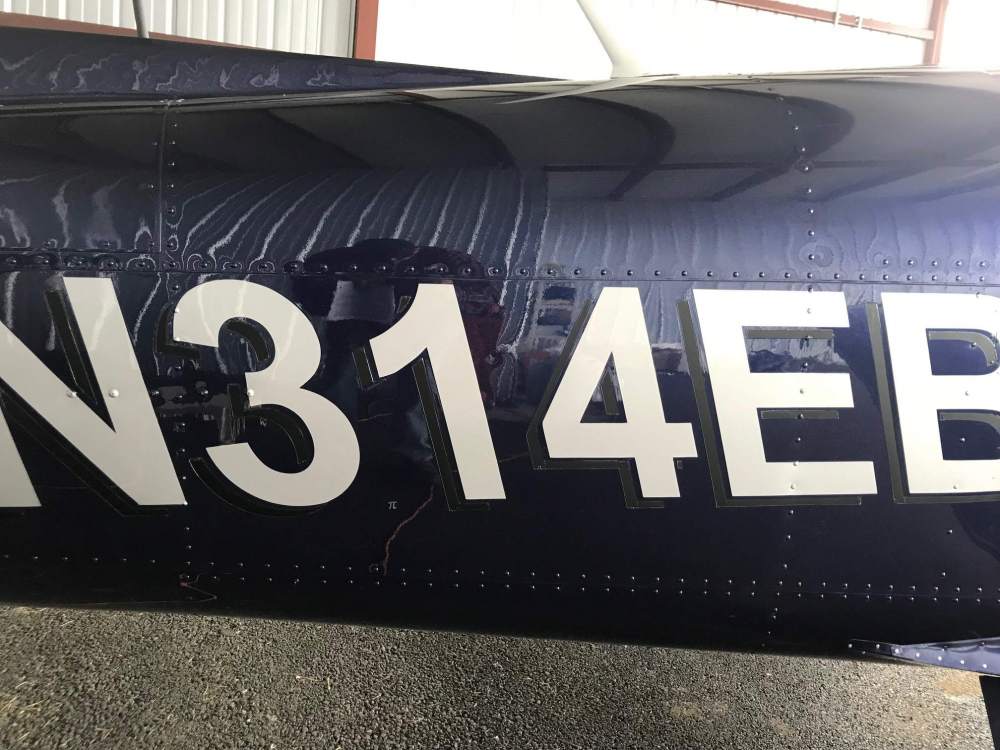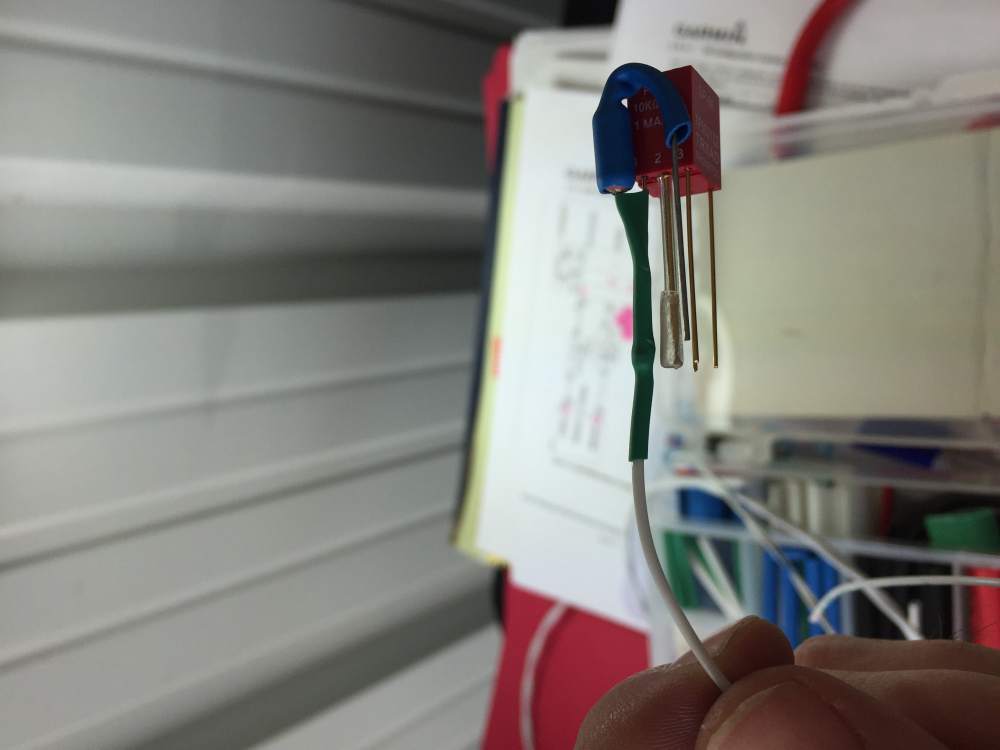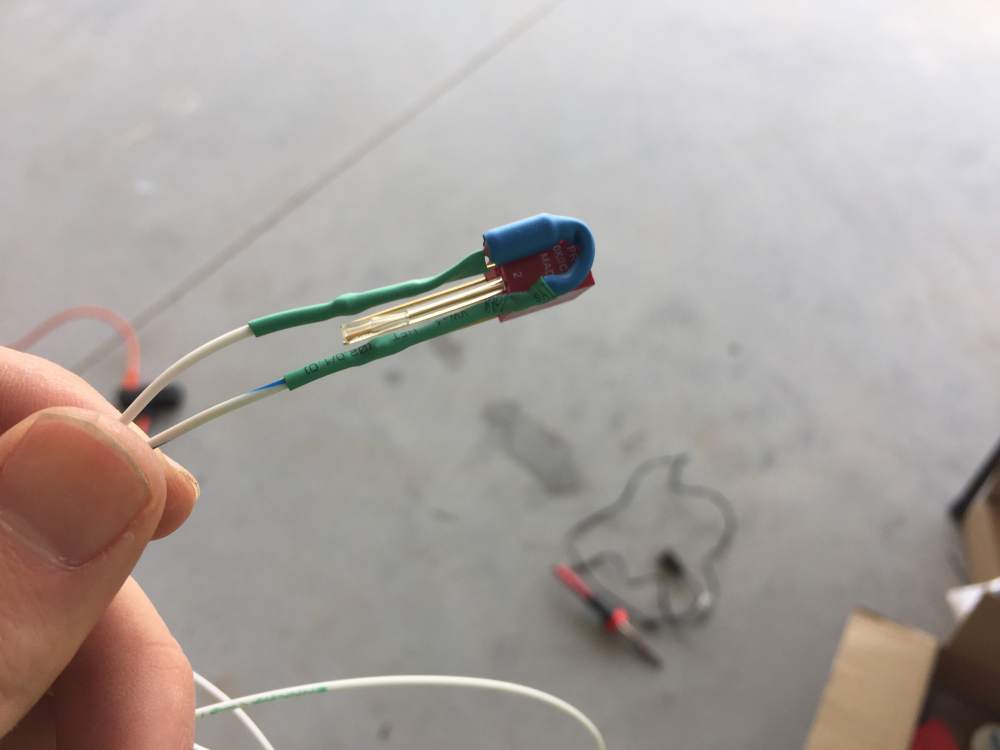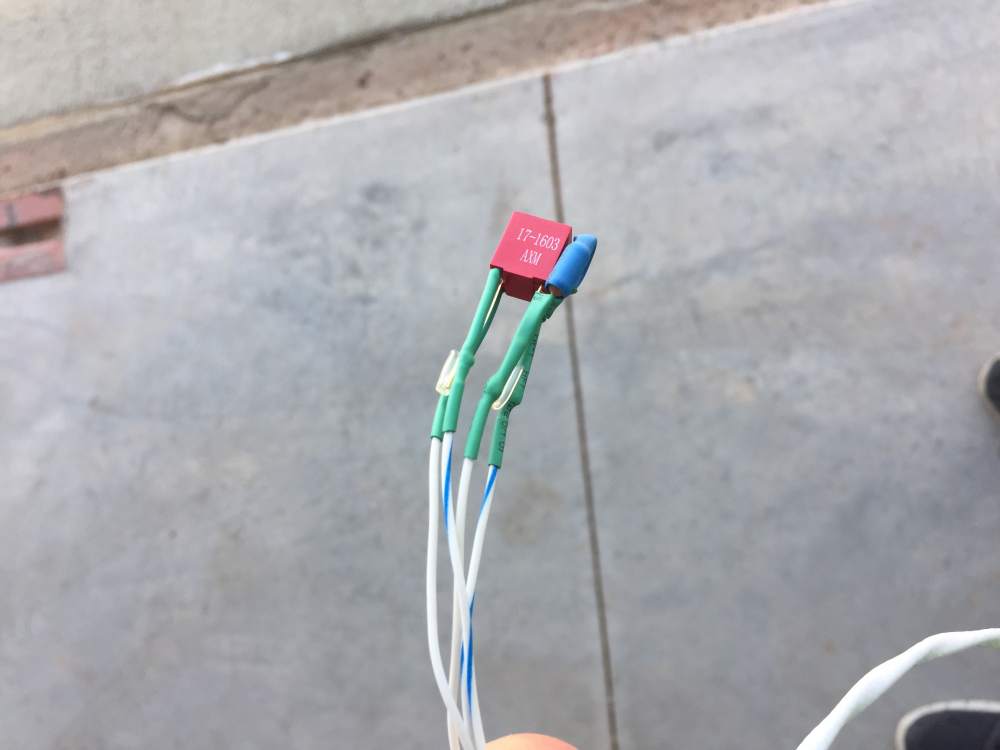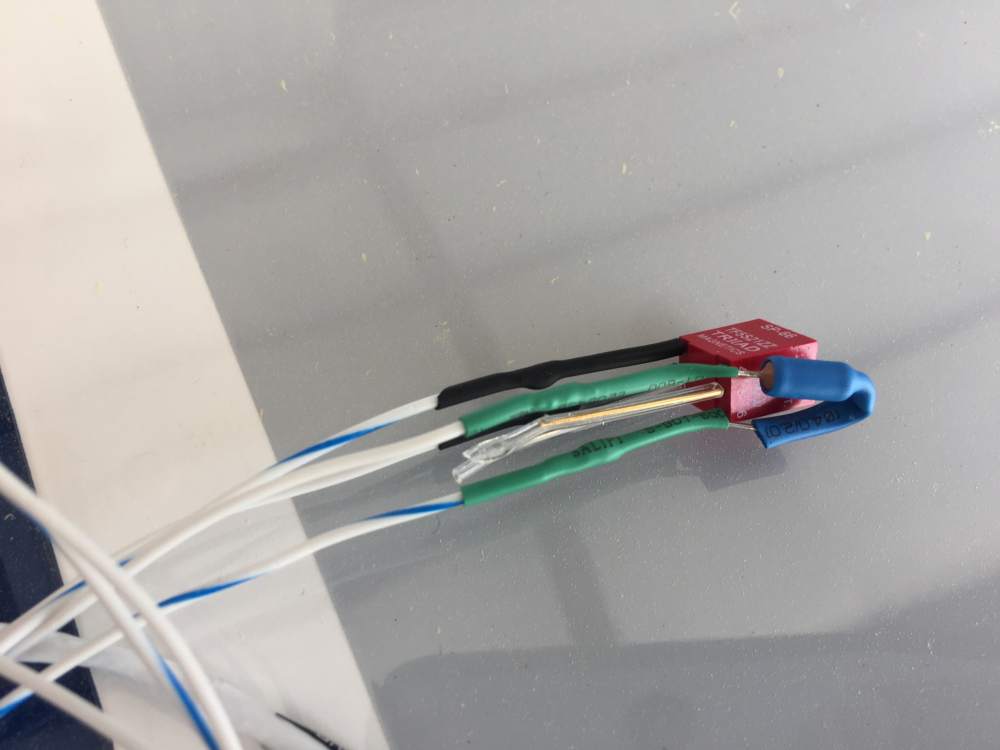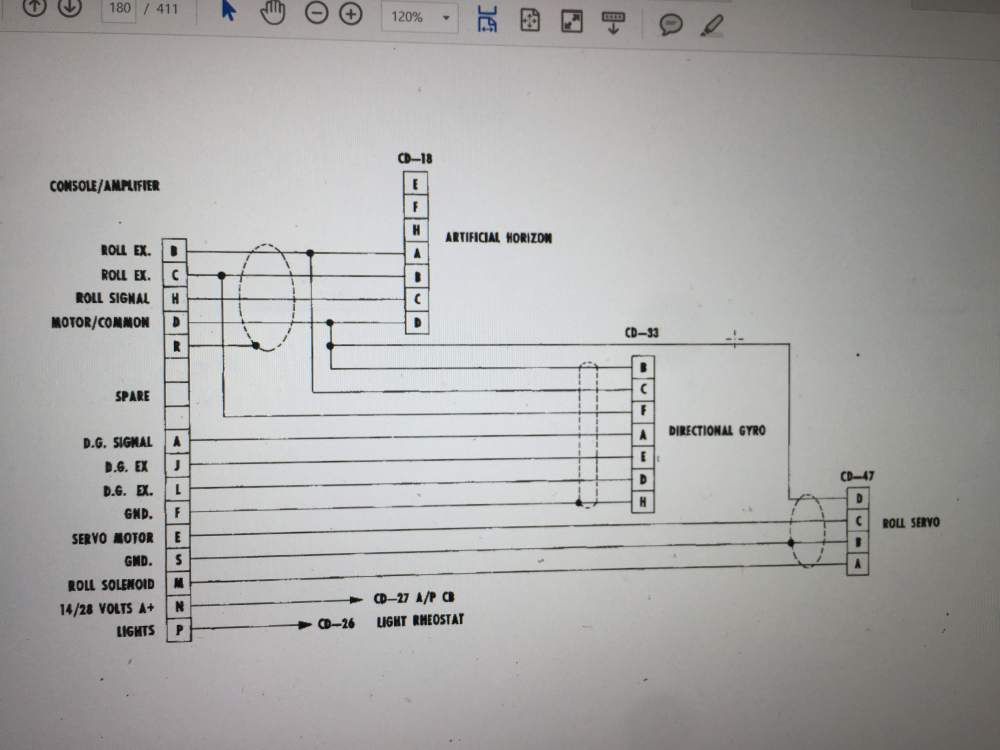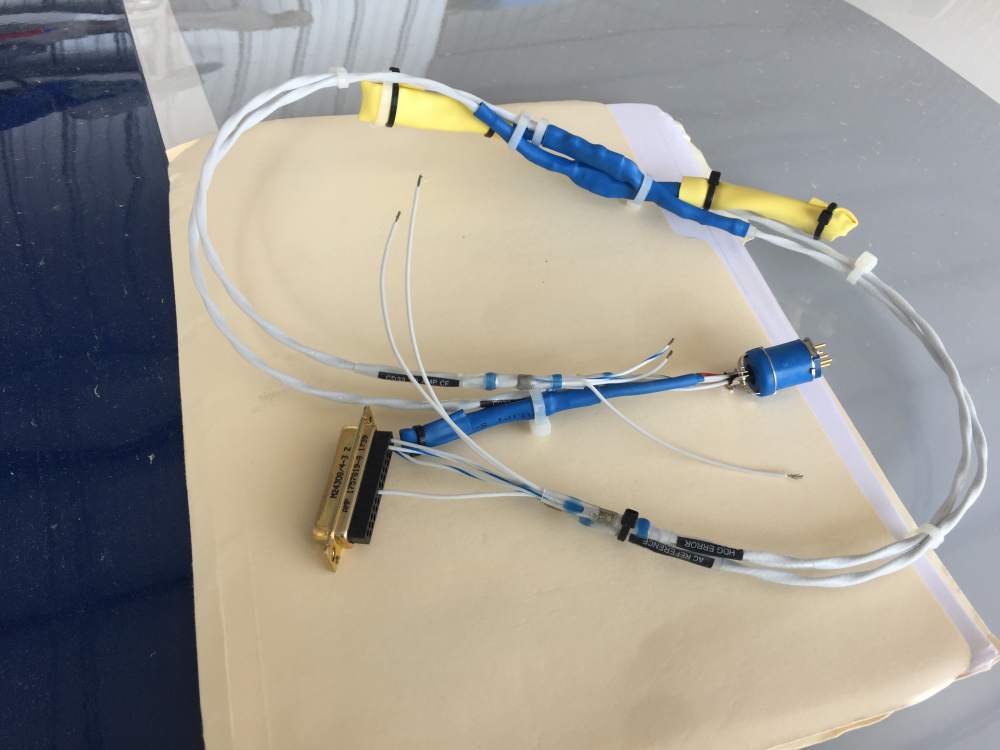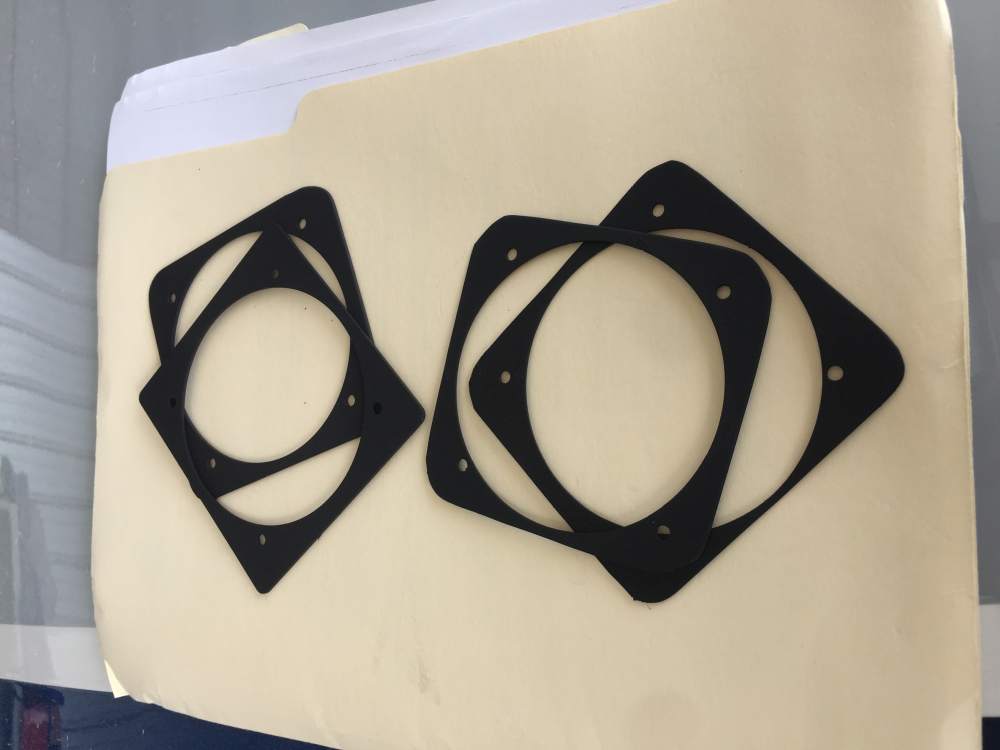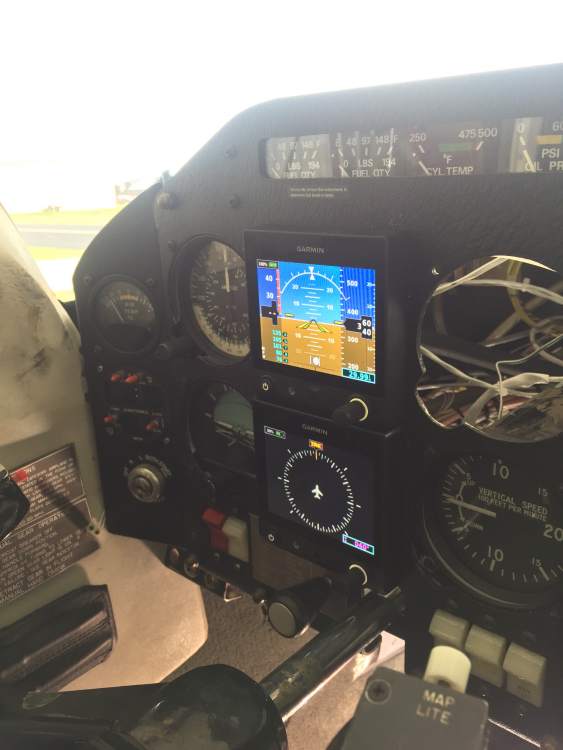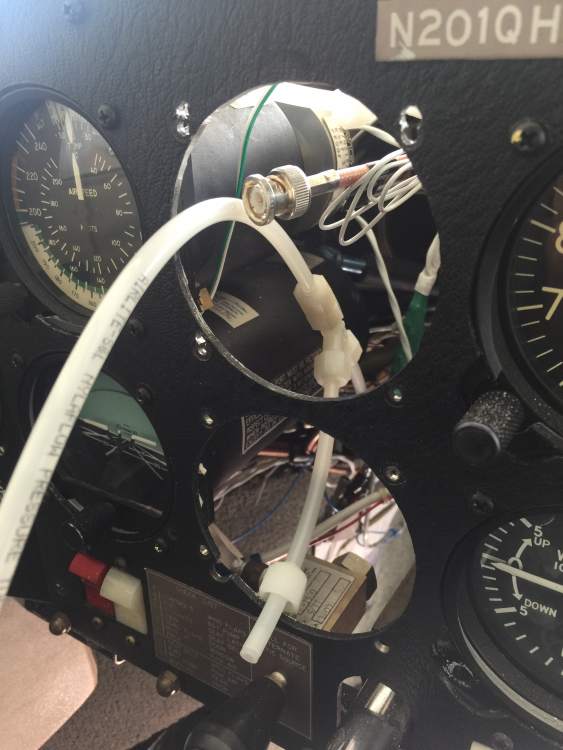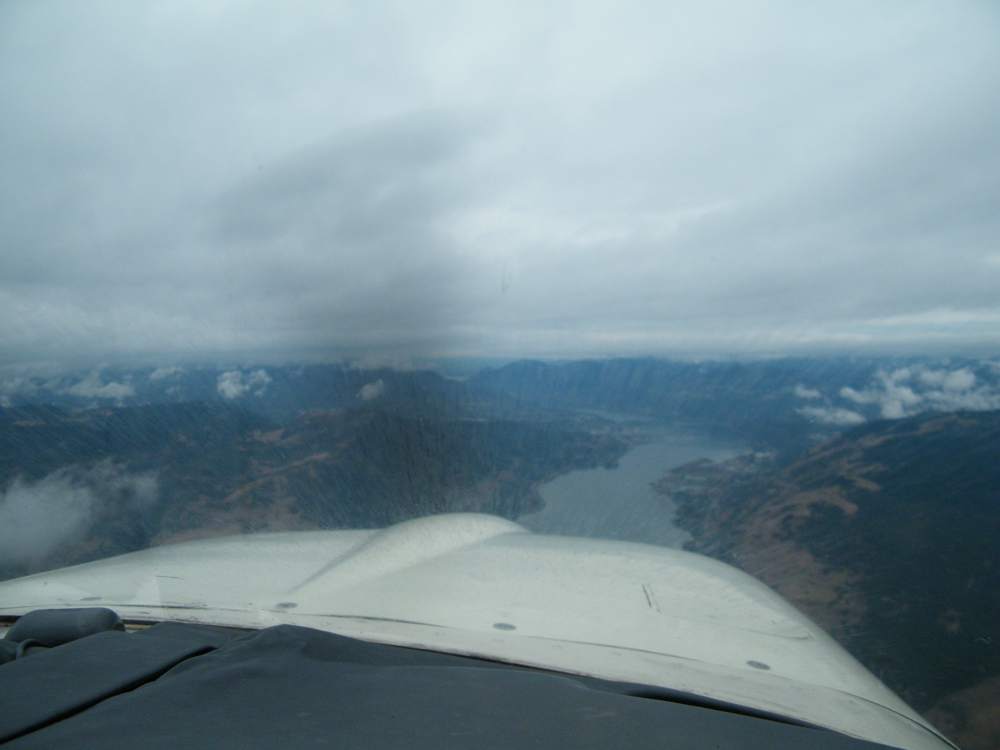Leaderboard
Popular Content
Showing content with the highest reputation on 05/09/2018 in all areas
-
I just wanted to let everyone know that I located a bulb for my plane and it still seems to fly OK. Thanks again for all the help!5 points
-
Just bought my first Mooney . . . a 1956 Mk20 wood wing. I knew the previous owner and the owner before him. So, she might have been your "girl" at one time too, but she's all mine now. Just wondering how many of the "woodies" are still flying? I searched the enormous amount of threads and found a few posts from a couple years ago. Maybe start a new conversation? I received a whole lot of great info from the previous owners and have a pretty good network of resources. This particular plane (N5227B) has less than 2,000 TT, 250 SMOH, new interior and paint. Starting to get to know her and work on some of the important things for these old gals. Anyway, I'll share some pics. BTW, she lives where she was born back in 1956 (KERV). Airworthiness is signed by Charlie Dugosh! Bill4 points
-
Hi @MyNameIsNobody, I have worked as an A&P (and IA, mostly on large turbine stuff) in the past and am currently a Mooney owner, so I hope I can try to give balanced consideration to both sides of the issue. I think, your last comments capture the core tension here: 1) "OEM PMA light build IS available" Core issue being: legacy certified tech is available and sometimes cheaper than new Tech non PMA, often much more expensive, but it IS available... ... but in this case it is it is incandescent and **generally** deemed a technology that is a) less bright, b) less reliable and c) draws more current than a non PMA LED which would, in most cases, be considered be "safer" at least to the extent that it matters at all that lights are on aircraft (LED's are more likely to be seen, more likely to be left on during times like daylight when non-LED are pretty much invisible) ....BUT... 2) "a $200 bulb is ridiculous" Core issue being: Funds are ultimately limited to all of us and we have to make compromise choices: Upgrade, Keep, Do Without. (unless you print the stuff), money spent on "X" no longer exists to buy "Y" and that the opportunity cost. So, even those who may not deem the $200 bulb "ridiculous" may have had to use those funds on other stuff that are more fundamental (than lights) to safe/legal flight. Consider what we can do for aircraft safety/compliance by way of maintenance with the difference in a certified pair of LED landing lights and a non-certified LED set. Resulting gotcha: Some new technologies are so "new" that they are totally unknown qualities and would be sketchy to install in any aircraft if they were a critical system. Some "new" technologies are highly vetted so their performance/reliability are well established vs older technology (e.g. LED's vs incandescent bulbs). But the bigger issue is that the technology world is accelerating far faster than a governmental certification bureaucracy can keep up... and that rate of innovation itself is accelerating further so the gap will continue to widen. The tension really comes to a head when the process which was originally intended to certify parts to make sure that safe parts are in airplanes, in more extreme cases, can get so far out of pace with technology that the net effect of the certification process piles up 1) time delay to certification, 2) large certification-driven expense to the few "approved" parts that make it to market and 3) a dynamic of warding off technology providers who blow off making products for highly regulated environments in favor of less regulated markets. So, ... in more extreme cases the certification process can, in the net, achieve exactly the opposite effect of its core intent/mission/rational for existing. Further complicating that in the Mooney case is the grey areas in the FAR/AC and IPC for the aircraft (apparently) proscribing the light housing but not the bulb. In cases like these LED's as with so many things, now there is no opt out of risk, just choices of risk flavor for both the pilots (balance personal vs financial vs legal risk) and for the A&P/IA's to balance the likelihood/severity of real legal risk (favoring a conservative interpretation of the rules) vs. allowing certain things that they deem safe and within the rules (more liberal interpretation). One of my A&P instructors back in 1988 use to answer "You pays yer money and you makes yer choices..." to a lot of questions that students would ask... It frustrated people often, but I think he was helping prepare them for the the big, wild "out there". Just a thought (or two)4 points
-
I want my airplane to be safe and hopefully legal at the same time, but I think we all know there’s a difference between airline and private maintenance. It’s one thing doing maintenance on transport category airplanes for which parts are readily available, and quite another on 50-60 year old airplanes where standard (read that to mean...automobile light bulbs and tractor headlights) parts were used. There are no experimental aircraft flying in the transport category world or trust me—your management would be ALL over the FAA and Congress to let them use the parts. They are the ultimate CBs. There is room in the regs for IAs to make decisions about what may be installed with a signoff and when certain items are major mods. I hope an IA working on a Part 91 privately owned GA airplane would exercise that discretion if he wants to keep these airplanes around (although I would respect his final decisions). I don’t want or need a drive-by annual but I do expect my IA to have enough judgement to understand that the purpose of an annual is not to make these airplanes new again.4 points
-
I had a problem with piss poor climb and low airspeed. Turned out the carb heat butterfly broke and flapped open. Look inside the intake below your prop, it should be closed. Mine flipped open . . . It was bad enough that ATL Center asked if I was really a Mooney.4 points
-
An IA does not have discretion to use un-approved parts. Nor can he make a "mod" without approved data. Unapproved parts are the FAA's biggest concern, and the most likely cause of an enforcement action against the IA when they are found. Does it happen often? Yes, usually as a result of something else. Pilot has a prop strike, FAA comes with operations and maintenance inspectors to evaluate the faulty pilot and his airplane. Maintenance inspector finds illegible placards, NAPA parts in various places, and the infamous LED retrofit lamps. Pilot says, "i dunno, he signed it off". IA holds the bag, usually with a 90 to 180 day suspension of his certificates. That's a 1/4 to 1/2 of his annual earnings gone, over an unapproved lamp. But he is supposed to know better, whether it's a lamp, a carburetor, or a wing spar. I hope you can see this from the perspective of the person who has the most to lose.3 points
-
Too expensive but here is a sample of what I am working on. Sent from my E6810 using Tapatalk3 points
-
3 points
-
2 points
-
2 points
-
If your landings are short to your satisfaction and smooth to your Mrs. satisfaction, who cares about a stall horn?2 points
-
Best Mooney speed mod: Forget gap seals or cowl upgrades (?), just add a 750 hp PT6A.2 points
-
Pro trick. When taking things with little things apart, do it over a shop towel on a table. Second tip. When not following the first tip and you are taking something apart and you hear the tink of it hitting the floor. Stop looking at what you are doing and look immediately where you heard the tink and follow the part rolling away. If all else fails, flashlight with cheek to the floor and scan looking for the part that has been trying to return to the wild.2 points
-
He said you stacked some mags in the beech to sway his thinking... https://www.aopa.org/news-and-media/all-news/2015/january/pilot/t_ql https://pasturepilot.wordpress.com/2013/12/27/flying-the-harpoon/ Reciprocating engines aren’t safe enough below 16,500’. Go Turbine! I need to ask our Mooney marketing friend... where’s the Turbine Mooney project? Best regards, -a-2 points
-
Welcome aboard, PPR... Sounds like an expensive way to buy a machine... Where in Jersey is it? I know a guy.... This guy, named Dave... https://www.airmodsflightcenter.com/ Best regards, -a-2 points
-
Check the strap at the bottom of the door. Someone leaning on the door, or slamming it, can bend it, then it will act as you describe. It can be removed, carefully disasembled (don't lose the teeny, tiny ball bearings!) and flattened out. Reassemble, reinstal and lube well with TriFlow. Voice of experience . . . Yes, those little bitty bearings are hard to find on the hangar floor, and yes, they roll really well . . .2 points
-
2 points
-
It’s is also of similar form fit and function to the original part, has a TSO, has a PMA, is cross referenced in the Whelen catalog, and is installed in accordance with 43.13 Chapter whatever that seems like it passes the approved data sniff test. Thus no STC needed. No 337 needed. It is definitiaonaly not a major mod, so seems to land firmly in the category of minor / logbook entry.2 points
-
McMooney, I cut out all the static in your post.... focussed on what the challenge is... Tried to get a feel for what you need... Knowing what you asked... 1) You have radio technology from the 70s. 2) There is something wrong with your radios/installation. 3) You use your radios to fly. 4) Time to get a new to you radio with fresh install... recomendation... go see the man that sells used digital GPS/Nav/com boxes. get one. have it installed. Celebrate the ability to fly somewhere randomly, talking clearly to every ATC station as you go... Expect looking forward to spending money on new wire, antenna, and connectors... Also Expect that you can waste more time, money, on other 70s stuff like platform shoes and wide ties... The KX170B Both made BK and broke BK... They made a good radio once... and held on to it for way too long. Feel free to take down the mirror ball and put away the disco records. Or, start at one end, proceed to the other... clean every connection from antenna to radio to ground... depends on your skills. oxidation is the enemy... Or, start in the middle where BK went from tube radios to digital technology. KX155 or KX165???... PP thoughts only... not a radio guy... Best regards, -a-2 points
-
2 points
-
Just wanted to let everyone know what a great positive experience I had at Pietsch in Minot ND last week. I had been having trouble with my 231 banking to the left and decided I would take it down to Pietsch, a three and a half hour flight to get things done by some one how knows Mooneys. Jay the new own made time for me even after I got weathered out and was a day late in arriving. We took the plane out for a demo flight, he took the controls to get the feel and then wen back to the shop, used the travel boards, made some adjustments, we went up again, made some more adjustments and then flew it again...straight as an arrow, after 8 years of the auto bank. Great shop, there where Mooneys, war birds and others all being worked on. The mechanic were all very nice guys as well. The Air Museum was not open for the season yet but Jay said he would give the manager (and one of the co founders) a call and ask if he could give us the tour. We had a private tour, very impressive, three Mustangs, a Spitfire and many more great planes (all flyable I might add), just parked in the museum and get pull out regularly..unbelievable. Also on one of the demo flights the Canadian Snow Birds came into the airport, I landed between two of the sorties..I now tell people I few with the Snow Birds. This airport was by far the best GA experience I have had in my 13 years since I started flying. If all GA was done like this, GA would not only be surviving, it would thriving. I'd like to say thank you Jay for everything, cant say enough about the experience. https://minotaerocenter.com/1 point
-
Assuming you are using something like a 6061-T6, you will not have much luck bending without breaking. If you want to anneal the aluminum, you can heat it to 775F, then cool slowly to ambient temperature (ideally hold for a couple of hours at temp to fully anneal, then allow to cool over a couple of hours -- maybe wrap in some insulator to slow cooling rate). This will leave you in the soft condition which will provide much more ductility. After forming you can then age harden if you wish to have the higher yield strength. 350 F for 8-10 hours, then allow to air cool and you should be close to the T6 condition again.1 point
-
1 point
-
Nice idea! I liked the 3 posts, too, one for each tire!1 point
-
BeechTalk says December 2018. But as the KI300 it requires(or Aspen, G500) is not even shipping yet, my guess would be December 2020 at the earliest. If you have no glass now then I think for many the G5+GFC 500 will be a better upgrade. If you already have something that works with it then it may make sense.1 point
-
Yes, fair price. The audio panel is connected to everything = lots of wiring. 40 hours @ $100=$4k. By the time you factor all the wiring connections and debugging the inevitable problems that come up playing with older wiring this looks like a reasonable price. It is hard to imagine doing it for much less than 40 hours and it could take longer if there are any debugging issues. One option that may significantly reduce install time is PS Engineering 7000 series. They advertise as pin-compatible with the KMA 24. You may want to ask the shop to quote this as an option too. I have no personal experience with this specific product but I am very happy with my 8000 series. Just offering another potential option.1 point
-
I think the kma24 has a slide in retrofit from PS that might reduce the install slightly? Personally I’d forgo the compass card.1 point
-
So how did you end up there? Circling vulture looking for another Mooney to cut apart? You murderer! [emoji88][emoji23] Sent from my iPhone using Tapatalk Pro1 point
-
Alright now this is really strange. About a month ago when working on the glue removal on the cabin door I walked around the plane and my jacket caught the stall switch. Of course I looked at it, then turned on the master and confirmed it still worked. It was not a particularly forceful event when I caught it on my jacket and I'm sure most of us have done it before. Also there was no perceived difference in the appearance or the effort required to raise the tab and the horn operation was unchanged. The strange thing is while my stall horn always worked in preflight but rarely even in a full stall landing, now it has sounded the last 3 landings. Go figure.1 point
-
When i lived in WV, all that was required was $35. Not sure about Alabama.1 point
-
I'm not sure. I didn't know there where different lengths. I bought mine about seven years ago, so maybe they are different now.1 point
-
I assume you mean that you sign off on the inspection with a discrepancy list given to the owner.1 point
-
This is a long post, but I'll try to keep it reasonable. Have some popcorn if you like drama... I officially achieved the dubious honor of running into icing (and surviving) when we returned from SoCal to Oregon. We had planned for a long weekend and a return midweek, but when I checked the forecast, it looked like a cold front was forecast to come onshore midnight before our original return date. That cold front would have essentially run down from OR down the length of California, so it seemed obvious it was bad flying weather. The day before, however, the forecasts looked like great flying weather, so I made the call to leave a day early the night before. My wife was sad, but understood. I checked the forecasts the morning of departure. I went over the G-AIRMETS, carefully looking over the icing forecasts for the afternoon, as well as the CIP/FIP forecasts. No icing AIRMETS, and no forecast risk of icing or SLD. I planned to simply follow V23 all the way north, and I was, as always, worried about clouds around the Siskiyous between Redding and Ashland, but the forecast was for clear skies in the region. The only weather was offshore associated with that cold front--there was an icing AIRMET and precip forecast offshore, but I was not unduly concerned given that my route was 40-60 miles inland and there were no clouds forecast. I planned to leave the day of in the early afternoon from Santa Monica, since it looked like there was a marine layer in the morning then scattered clouds after noon. I didn't want to sit waiting for release for 30 minutes, and I wanted to take off VFR to pick up my instrument clearance in the air. As it turned out, I arrived at 1 pm and the scattered clouds immediately turned into a low overcast at 600 AGL, so no VFR departures. I got my IFR clearance, and, sure enough, waited 30 minutes for release. The flight up the Central Valley was unremarkable. Skies were clear. I asked for, and got 8000 feet to take advantage of a great tailwind--30-40 knots from the south. My groundspeed at one point hit 180 knots. The forecast was actually for less tailwind up high. All the while, I was checking the ADS-B weather for all the weather stations along my route. All were VFR with clear skies, but off to the west along the coastal hills, I could see some clouds and precip preceding the front. As I got north of Sacramento, I called Flight Service for any PIREPS on my route, and the only one was a Cessna reporting clear skies and no icing going over the Siskiyou airport at 7000 MSL. That's a valley that runs next to Mt Shasta about 10 miles east of V23. Unfortunately, V23 runs over the mountains west of the valley to stay farther away from Mt Shasta, but still at least 40-50 miles inland. As I approached Redding, a broken layer appeared ahead above me. It was hard to tell what altitude it was at, but it was thin and I figured I could fly under or over it. At that point, ATC gave me instructions to climb to 10,000 MSL for terrain anyway. At 10,000, it turns out I was just skirting the base of the broken layer. A check of the temperature showed 34 deg F, so I didn't feel great about this. I asked for and got a climb to 12,000 MSL. At that altitiude, I was just skirting the tops of the broken layer and the temp was down to 30 deg F, no icing. I asked for and got 14,000 MSL, and things were clear above. Once at 14,000 MSL, though, I got a bigger picture as to the cloud situation. Not only was the forecast for clear in the area obviously incorrect, but incorrect by a fair amount. Not only was there the broken layer I just climbed through, but on top of it I had a solid overcast layer ahead, although I could see the terrain underneath. To the east, the clouds looked a bit lower, and further east it was just the lower broken layer. I judged the overcast layer to be just about my altitude, so I debated climbing to 16,000 MSL, or descending back to 10,000, the MEA. Once I got closer, I realized even 16,000 MSL might not be enough, so I asked for and got 10,000. Back at 10,000, I was back in and out of the broken layer, but the temperature started dropping to 31 deg F. At that point, I picked up some trace icing and let ATC know, and asked what the MVA was there. He said, 10,000 MSL was the MVA, but just ahead of Fort Jones VOR, about 5 miles ahead, he could give me 9200 MSL. By this point, I was quite nervous and was planning my 180 to bail out, and told ATC as much. I could see breaks in the broken layer below me, so I debated (too long) cancelling IFR and going VFR underneath. At that point, I hit solid IMC and started picking up clear icing. I'm sure in retrospect, that it was "light" icing--just some streaks of clear ice running back from the wing leading edge and frosting of crystals on the windshield, but that didn't make it any less terrifying. Mentally, though, I thought 5 miles at my speed is 3 minutes, at which point I could get 9200, so I pressed on. Finally, ATC cleared me to descend to 9200 MSL, noting there was a PIREP ahead of icing near Medford. To my horror, the base of that broken layer had dropped below 9200 MSL, and the temperature was still 31 deg F. I was in IMC, I was not shedding ice, and I realized with panic that if I wanted to make a 180 now, I'd have to CLIMB back to 10,000 MSL. I'd just put myself into a proverbial corner. At that moment, I broke out of IMC and into the clear. Ahead, I could see solid stratocumulus at above and below my altitude. Off to the east, though, I could see the Siskiyou valley, and it was completely clear. I immediately cancelled IFR, asked for flight following, and let ATC know I was diverting east over the valley, which had a floor all the way down to 4000 MSL. I immediately started a descent to 7500, and was rewarded with the ice rapidly shedding. Once over the valley I turned north, and the full picture came into view. I was literally 5 miles inside a bunch of stratocumulus clouds that reached in from the coast like a hand over my flight path, with a bunch of fingers reaching west to east that I had been flying through. To the east, there was absolutely nothing. Once past Ashland, the entire rest of the flight was in the clear. I thanked ATC for their help and made a shaky but salvageable landing. I reviewed the video of the flight, and it was pretty clear from the time I started picking up icing to the point of breaking into the clear was only about 5 minutes, but it felt like 5 hours. Sure, I probably only picked up what amounts to barely light icing, but the possibility of it getting worse was terrifying. My wife, to her credit, sensed my tension and remained quiet, but she could see the ice well enough. Afterwards, I've reviewed in my head what I did wrong and what I could have done differently. Aside from the emotional recriminations about putting myself and my wife in harmss way, I first considered ending my flying career and assuming I don't have the judgment to be a safe pilot. After cooler heads prevailed, I considered buying a 252 with FIKI, but that would probably be out of my price range. In the end though, these were my thoughts. Planning-wise, I checked everything I could. Prognostic charts, G-AIRMETs, icing forecast, TAF forecasts, ADS-B weather and asking for PIREPs in route. All of them predicted clear sailing and no icing risk. Unfortunately, I let the benign forecast lull me into a sense of complacency. I should have reacted to the situation more aggressively and decisively, rather than hoping conditions would improve. I had outs before entering IMC. I could have stayed high earlier and asked for vectors around, I could have cancelled IFR and flown the valley (which I knew was clear by PIREP), and I could have given up and landed. I figured the thin broken layer was a manageable risk, but couldn't see the solid IMC behind and above it. If I had gotten high earlier, I would probably have been able to see the clear valley off to the east. I am clearly not good at judging cloud top altitudes. What looked like close to my altitude was in fact 2-3k feet above me, and by the time I noticed, it would be too late to get on top. I wanted to stay IFR because I didn't want to get stuck dodging clouds while VFR. In retrospect, I should have considered this the preferable option, because there would be less chance of getting backed into a corner. Light icing is terrifying and it should be. I kept waiting for the sudden build up which, thankfully, never came. At least I know now that I can stay calm and I won't fall to pieces. In the end, I pushed and got lucky. Once I descended to 9200, I lost my out and had to hope the lower layer was still broken or scattered, and luckily it was. I'm not sure where to go from here. The Pacific NW is a tremendous icing factory, but if you scrub for any icing risk, you'd be grounded half the year or more. On top of that, all the information indicated no icing, no precip and minimal clouds, until the point where I got the icing PIREP (which arrived at a most inopportune time). Feedback and comments are appreciated, even criticism--I know there's plenty to criticize, I've already been at it for the past couple days. At the end of the flight, my wife turned to me and said "That was the most scared I've ever been, but at least I know what icing looks like now. Let's try not to do that again, all right?" Thank goodness for understanding spouses.1 point
-
yep - in mph - 67 F 100 downwind 90 - base 80 final 70 at the flare beeeep - chirp wife looks at me and says - "nice one baby"1 point
-
My hat is off to @Fookz92 for saving a bird, but @Raptor05121 did a good job documenting it on 29 pages.....might have to start a poll1 point
-
Probably want the EGT probes installed pointing somewhat backwards to maintain clearance between your cowl and the wiring from the probe and the probe itself. Otherwise easy to bump when removing or installing the cowl.1 point
-
1 point
-
Hello friends! Hello from Chambersburg, PA - LaQuinta Inn! Near N68. So here's my story ... KPTD-LETUS-ART-SYR-KIGX - initially low to stay VFR out of icing clouds that eventually opened up to unlimited severe clear and I climbed to 16500 to enjoy a nice tail wind - 240-240GS for what was looking like a 2:30 trip. Somewhere in Southern PA (turns out right about HERE) talking to Washington Approach.... After a hand off they remind to maintain 16500 VFR which I confirmed - clearly because I am not in approach traffic for those jets going to Dulles and Reagan. Shortly thereafter my EDM blinked at me a oil pressure in the yellow warning. 28. Huh - that's not what I want - so I turned around to get my POH to see what is the normal range and in that much time by the time I turned back the oil pressure was 23. Uh Oh I have a problem and I looked up the nearest airport. Then in that much time suddenly I lost power. First power went to like half thrust and then to no thrust - but never did the prop stop it was windmilling. And still smooth so I doubt a piston blew. So I immediately turned toward what I found was nearest - N68 - which was something like 12 mi away - and I was at 16500. Actually that is one of the reasons I like to fly high - just in case this ever happened. SO then I told ATC I had an emergency my engine is out and I am heading to N68. They initially told me to maintain at or above 14000. I told them unable (or maybe I wasn't so cool and I said I can't my engine is out). Then I heard them moving other airplanes around. So then they told me airport 7 mi to my 12 o-clock can I see it? I said no I'm high and I can see on the gps it must be under my nose. My plan was to get right over the airport and spiral down. So I got right over the numbers at maybe 12k? And started making turns over the airport looking down at the numbers - 24. I asked ATC for the wind direction. At first I heard it was a severe cross wind but then I asked to confirm and it was as I thought - from having already prepanned my runway at KIGX (ok far away) that it must favor 24 (from the synoptic). Sure enough it did. Phew. Something like 20kts from 26? At 8k the engine turned back on briefly but then I smelled something burning so I killed it. Then I was afraid there would be a fire. SO I tried to get down a little faster. I was not doing best glide because I was high over the airport. I was doing commercial spiral descent. This is a good maneuver. It was really the thing for the day. get right over the numbers and look down at the numbers as you spiral down - even if you are at 12k. I also have a smoke hood that I keep behind the pilot seat and I put it at my ready just in case. The smell of burning was faint but there. Oil pressure was negligible. The EDM is flashing at me. ATC wanted to give me a hand off to Harrisburg approach but I told him I am overloaded right now and flying a glider so could I stay with him please and he said yes. And then I called to CTAF at N68 since I didn't know if it would be busy and the last thing I wanted to do is to dead stick into a ,mid air collision. I told an engine out emergency and coming to 24 - I can't remember the exact words for anything. I was very vert flush with adrenaline at this point but I was still doing all the things as I should. I was watching airspeed, watching my landing point, and talking when needed and managing a possible fire and coming down as fast as reasonable. I opened all the airflow ports into the cabin but not yet the side window since the smell was only mild. AT 3k I decided to not make any more than this one last turn. Last thing I wanted to do was to come up short. Or worse to let myself get slow trying to stretch a glide further than it will stretch. Then I popped out all of my drag - gear, speed brakes and flaps. So at the end of the last turn I was maybe 2k? I pointed right at the threshold and flew over the trees at maybe 100? Thanks to a strong head wind - despite crossing the numbers at maybe 90 and a good long float I still had a reasonably smooth landing and rolled by half the runway and had a proper amount of speed to roll off the runway. Yay! I think I just used up one of my nine lives. Then I got out quick in case it was on fire. But it wasn't. Also as I was rolling I told on air traffic control channel I was safely on the ground and some other pilot relayed that he sent the message to atc. Then soon the airport manager drove up in his truck. He had left for the day to go home but got a call from ATC that someone was coming in dead stick. - me - He was very happy to see me. I was even happier to see him! And I was even happier than that to see me! Then the local fire station brigade showed up. I shook some fire man hands and thanked them for coming. And they said they were happy to see me! Then the air traffic controller from Washington Approach called me on the phone to check up on me. And I said thank you thank you to him! I know my voice was shaky...and no doubt besides being scared I had a big shot of adrenaline..but I was assertive and said and did all the things I was supposed to do. Thank goodness. I had such a big shot of adrenaline that by the time I got out of the airplane I realized my hands were just completely shaking and my voice was shaky. But I did all the things and I stayed on my numbers and decisions and flew that airplane all the way to the stop. What happened? I dunno....I suspect a turbo, or I spoke with Bennett and he suggests it could be a frozen oil cooler valve of some kind. But there is no spilled oil mess. So I don't know. Would that cause an oil burning smell? Either could cause a loss of oil pressure right? I doubt it blew a cylinder since it was never shuddering - just smooth. So on the lucky side - despite being a tiny airport, it is sort of a jumping airport and the manager has his airplane getting its 100 hour tomorrow am and the mechanic will be there and he said he would have him take a look at my airplane first thing. I am doubting that it would be small enough to be fixable on the spot - some kind of parts will be needed I bet. Hopefully not a complete new engine. Oh well - at least I am sitting here safely on a hotel bed typing about how a new engine would be annoying. Even the paint job is still in shape!1 point
-
Hi Simpson, Barry reached out to me about using the Mooney Summit as a way to reach Mooney owners. I explained we are not a trade show but we do have sponsorship opportunities we could entertain along with we accept donations for our silent auction and door prizes. He went radio silent since. Do you guys want to donate a 3100 to our silent auction? If so, just let me know. We are coming up on finalizing our sponsorships this year and would welcome Genesys joining our list of industry leaders who support the Mooney Community. Thanks1 point
-
Yes, very true that GP government airport diagrams are not geo-referenced since they instead provide safe-taxi diagrams. I can’t say for sure since I am not Garmin, but I always assumed they did this because the government charts are very lacking for airport charts. Your base like mine may have them, but many instrument airports do not. So I assume GP didn’t want to provide 2 different methods: airport diagram when available and safe taxi when not. They do provide safe taxi for all airports with instrument approaches AFAIK. There is another option in GP to get geo-referenced airport diagrams but it may not interest you because of the $. But you could add a Jeppsen subscription to get them if you want them that much. Personally I never gave the lack of frequencies on the safe taxi diagrams a thought. My habit it to get the ATIS, talk to ground and perhaps Clearance and enter all frequencies I’ll need before I begin taxiing for the runway. So I’ve never missed them, plus at an unfamiliar airport I am more likely to load the freq by selecting them off the panel GPS from the nearest airport page rather than enter them a digit at a time. Now I can use intellivoice commands to verbally load nearest ATIS, ground, etc. just pushing a button. Sent from my iPhone using Tapatalk1 point
-
Almost there one more afternoon and the thing should be wired in, and hopefully tested / configured. I have to go to work tomorrow for a couple of days, but have an appointment with the avionics shop on Friday to do the pitot / static. I also pulled the altimeter and had them bench it as I am do for 93.411 (and got off schedule between the xpdr and altimeter so now they're 7 months apart - oh well). Today's progress was: 1- Finished the most complicated wiring harness (this included learning all about transformers, resistors, inductors and capacitors and what happens when you start combining them in series or parallel). This is the harness that interfaces between the Gad29b and the Century IIb autopilot. I also had to go to the back of the radio coupler and figure out which leads are which on the CD33 connector. They were looking rather beat up, so rather than just clipping them and resoldering all the leads to the connector, I thought I'd try to "do the right thing" and map and resolder all the leads, including the two new spliced leads from the Gad29b). This way if I even needed to put things back the way they were before (e.g. to test if something doesn't work right), I can just plug the harness back into the DG and it should be good to go. 2- Finished the panel work. Made some panel adapters. One set came for the HSI as it needs to screw in the DG's hole pattern. The other I made as there isn't quire enough vertical clearance between the units. So some panel surgery was done per the installation manual. One of the photos shows it pretty well, but new screw holes are made 3/6 in or so north of the old, and the top of the instrument hole is ovaled out to create clearance for the G5, then sandwich adapter plates are used to mount the G5 to it's mounting adapter. 3- Re-routed vacuum lines. I had another question somewhere about how best to do this. The DG and AI vacuum sources both come off the regulator and fresh air enters through the instrument air filter. Before, the vacuum gauge read off the back of the DG via a little manifold. Now, I used a 1/4 to 3/8 barb adapter to measure vacuum at the regulator. I used another 1/4 to 3/8 barb adapter to connect the vacuum gauge to instrument air - now I don't have to worry about unfiltered air getting into the regulator. 4- Finished plumbing pilot and static lines for the new instrument. On Thursday I'll need to make another tray for the Gad29b. I'll need to decide whether to make it out of carbon fiber and put two shelves in the tray (one for flightstream 210 and the other for Gad29b), or fashion a tray out of aluminum. Then all the clamshells get put together and wires get tidy. At that point, we should be good to go. Almost there.1 point
-
1 point
-
Oh, believe me I will fly whenever I can. But for dealer meetings and other mandatory commitments, I will not hesitate buying a round trip Airline ticket last minute rather than put myself in an ugly situation. Admittedly, a turbo, flight level capability at over 200 knots, and TKS lessen the frequency I need to buy an airline ticket, but it still happens occasionally. To be clear, I think the OP did a good job and will likely plan differently or upgrade to a ride more capable of the weather and terrain he must fly in. That’s why I bought the Rocket to replace my F model. I didn’t hurt that my wife was pushing harder for the upgrade than I was. Tom1 point
-
1 point
-
Thankfully I never found ice in WV or OH. Now I'm much more concerned about CBs . . . . My rule is still: good weather, go VFR; bad weather, go IFR; really bad weather, go CAR.1 point
-
Smart, that’s all I can say. You saw the box coming and avoided it. About a year and a half ago I was flying from AR back to MN, deviating somewhat to the west because of a large front with Tstorms that was to the east and moving further east, so I was behind it. When I got up to Minnesota there was some cloud cover below me emanating from the front. As I flew further, I initially just went up in altitude. I have a 231 so I got up to FL200, but the clouds ahead were still rising and they were thick. The problem, as probably everyone will recognize, is that the tops are where alot of the moisture is. All it takes is a little dip for a few minutes into one of those things and you can get slammed. So when it appeared I needed to go up further, and given that the service ceiling is 24k, I instead told ATC I was going to make a 90 degree deviation, which turned into a 120, which took me in fairly clear weather to Des Moines, where I decided to land, refuel and rethink. From Des Moines the rest of the trip home was uneventful. There was room under that cloud deck. But I hate to think what would have happened if I had soldiered on “just to check it out.” Same as you. And here we are, talking to each other, what a delightful thing!1 point
-
Along the same lines as Rich and Paul comments, I'm reminded of something I heard along the way: -If it's bad, go IFR. -If it's really bad, go VFR. (And, BTW, I'm not sure I would've done anything significantly different than exactly what you did.)1 point
-
1 point
-
Welcome to real IFR flying. You are not a virgin any more. Personally, I would have canceled earlier, it looked like there was plenty of room for a VFR flight. Great job dealing with the situation!1 point
-
Pretty hard to notice airspeed late in the flare, and the indicator is pretty inaccurate at those near stall speeds anyway. If you're curious you might have a observer notice it for you while you focus on touch down. -Robert1 point





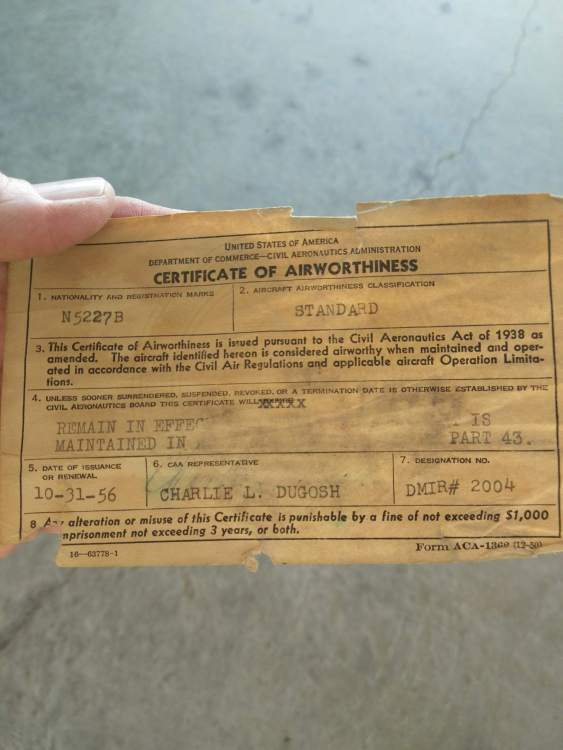
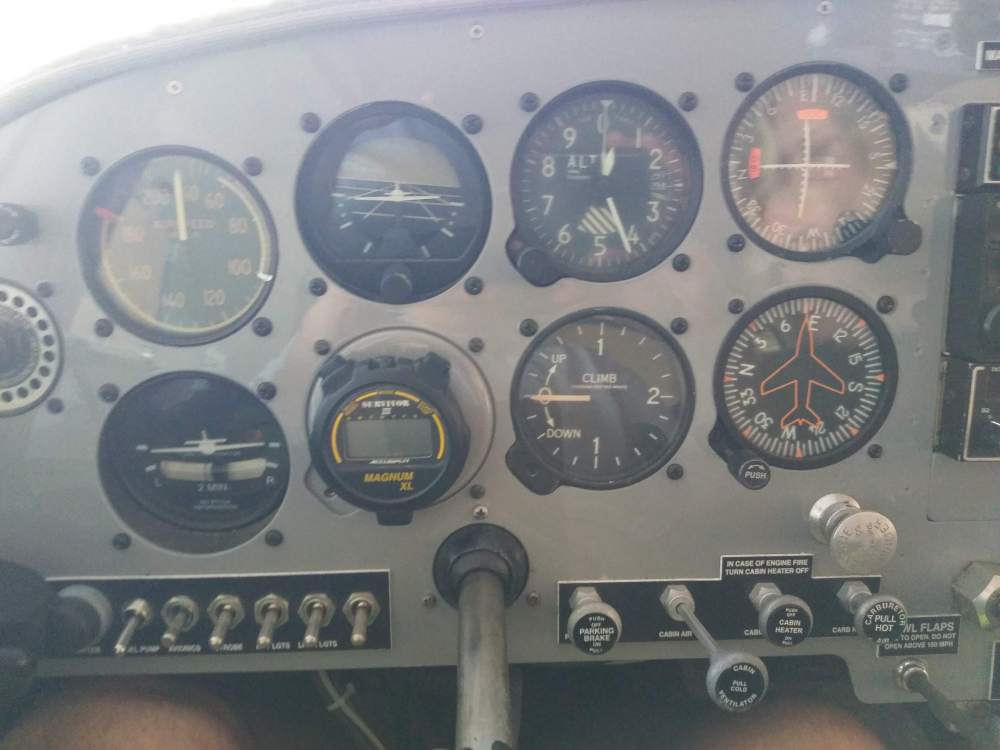
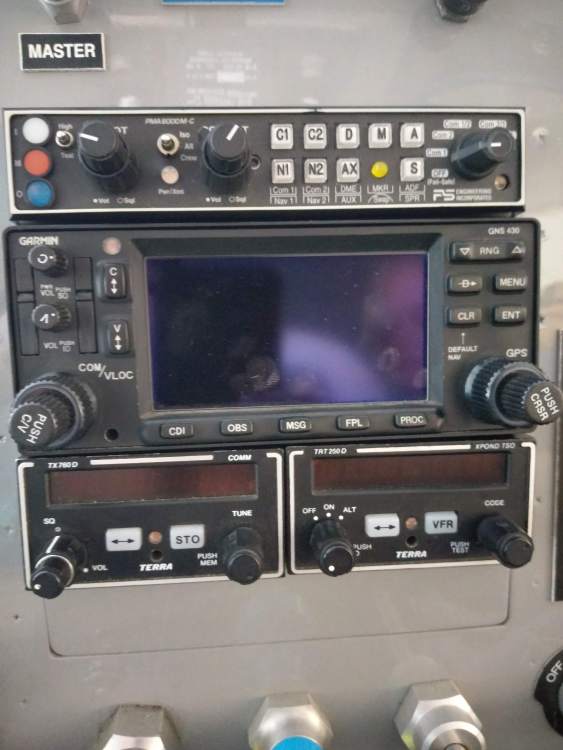
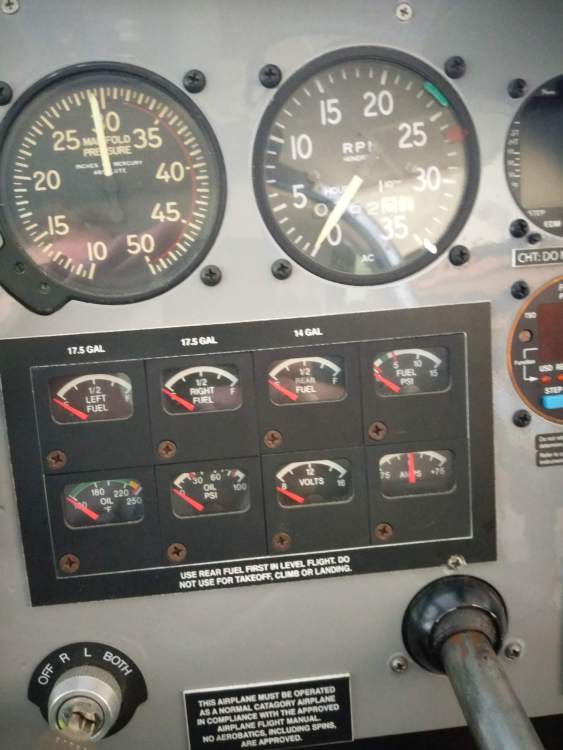
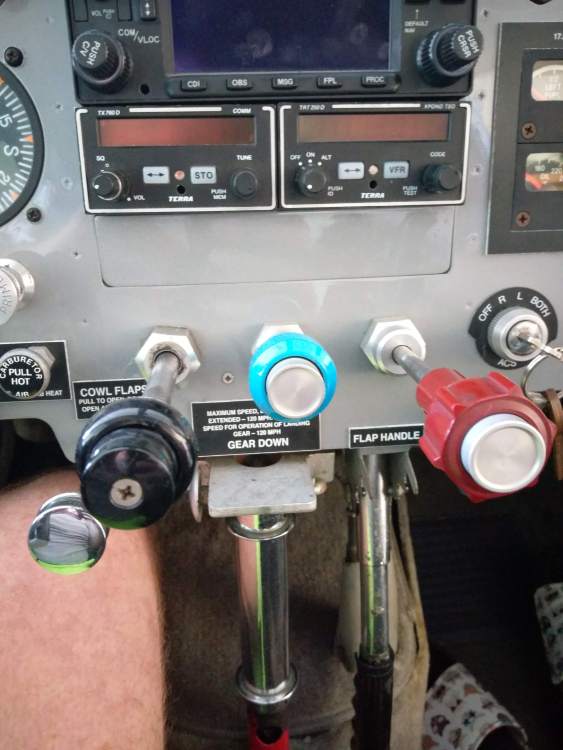
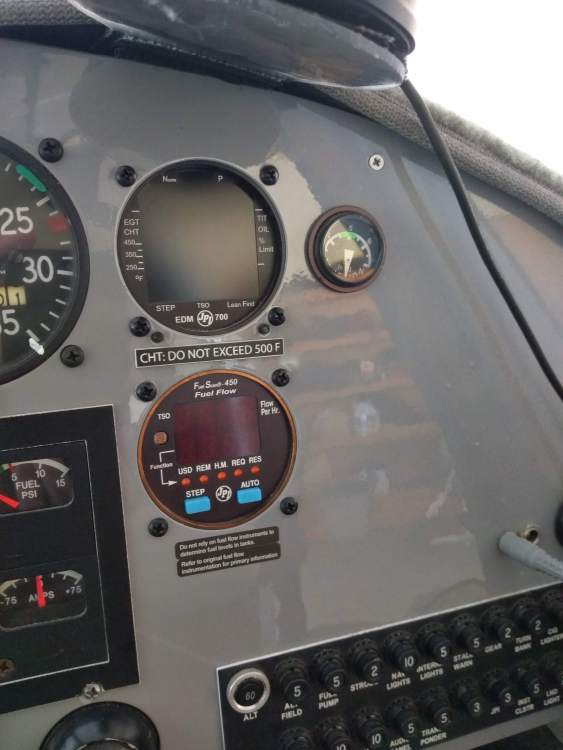
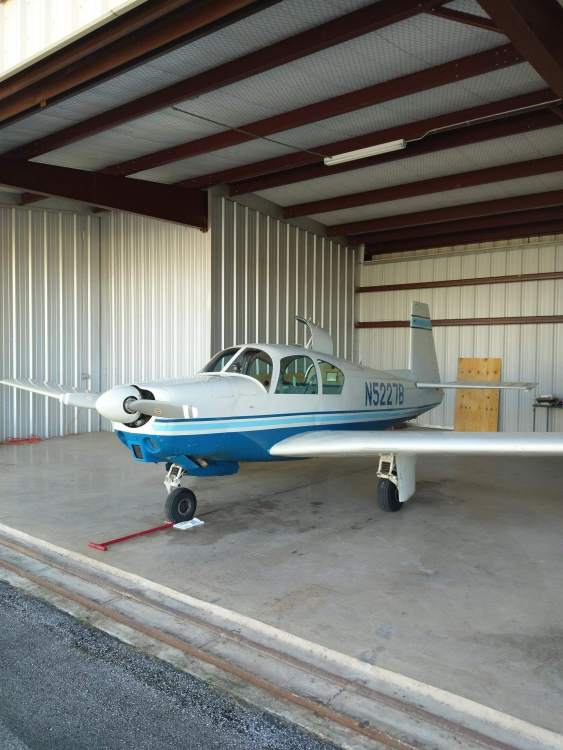

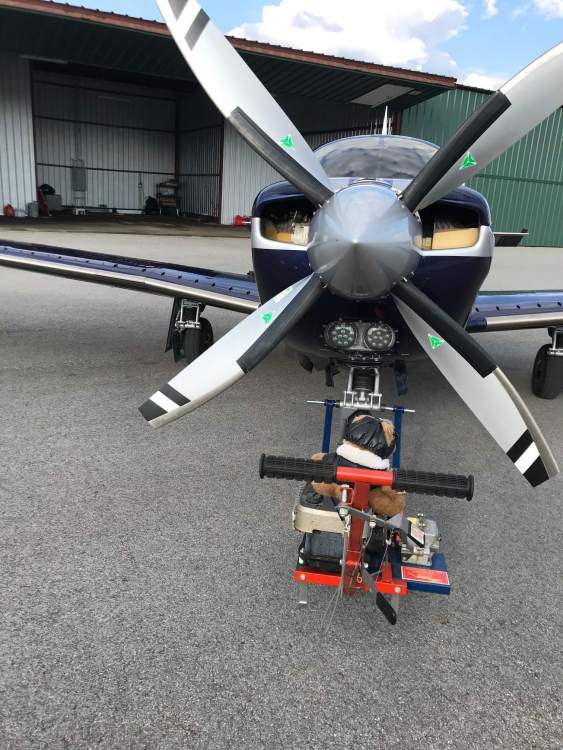
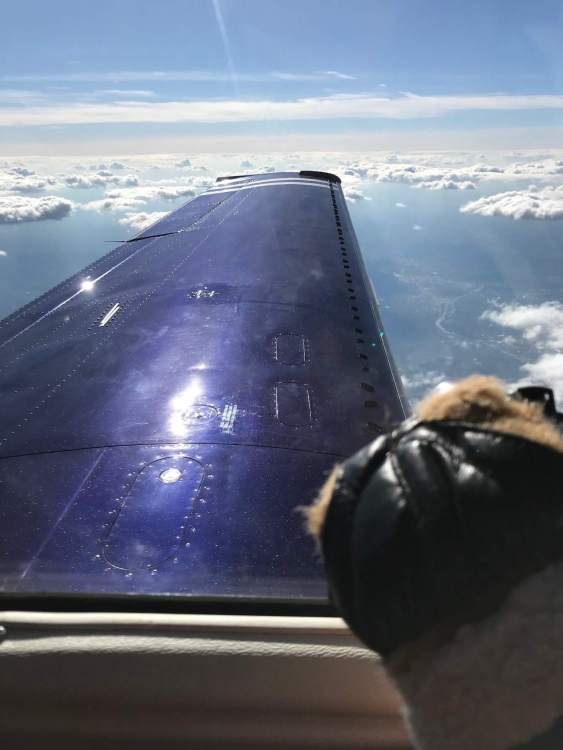


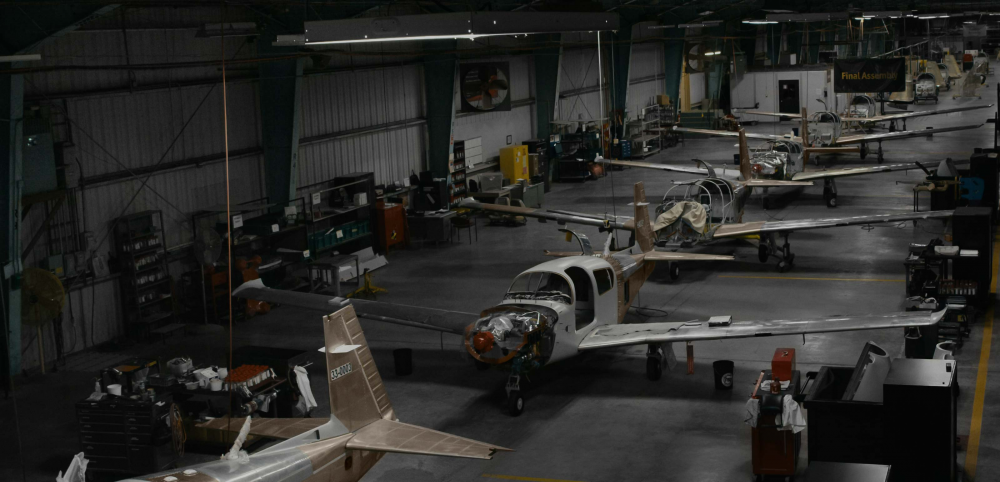

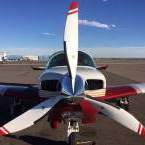



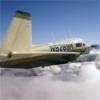
.thumb.png.7c67574d7b28f67b0b4a17760919b1ac.png)
